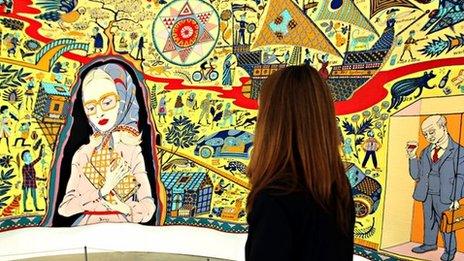National Portrait Gallery shines light on William Morris
- Published
The influence of artist-craftsman William Morris on 20th Century life, and his concept of "art for the people", are being explored in a new exhibition at the National Portrait Gallery in London.
Morris is known for leading the Arts and Crafts movement and for designing wallpaper that he hoped would allow aesthetic beauty to be a central feature of ordinary homes.
The exhibition, titled Anarchy and Beauty: William Morris and His Legacy, looks at his wider ideology and influence and includes his diary, furniture, portraits and other possessions.
They are displayed alongside the work of his contemporaries and those he inspired.
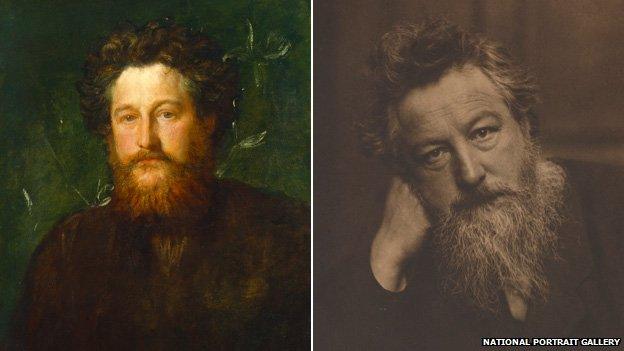
Several portraits of Morris himself feature in the show, which covers the years 1860-1960. They include this 1870 painting by G F Watts (above left) and Frederick Hollyer's 1884 portrait (above right).
Morris, who died in 1896, believed people should aim to "have nothing in your houses that you do not know to be useful, or believe to be beautiful".
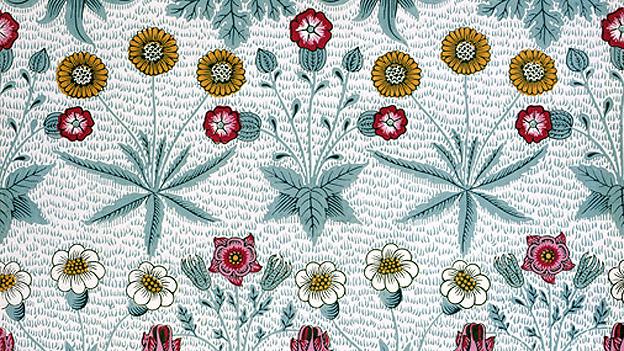
This wallpaper design, titled Daisy, was the first to be issued by Morris, in 1864. Daisy was based on a wall hanging illustrated in a 15th Century version of Froissart's Chronicles.
Despite his belief in "art for all", Morris' wallpapers were hand-made and expensive and so their appeal was limited to well-off homeowners.
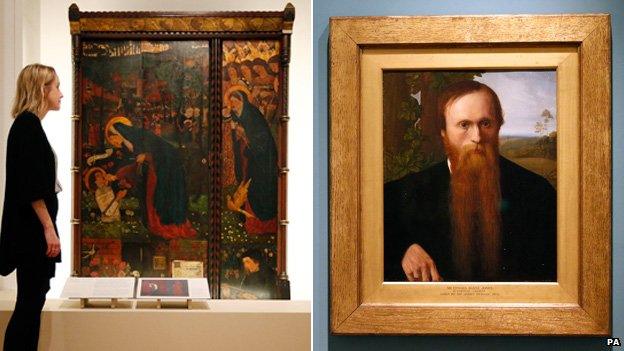
Pieces created by the artists and craftsmen of Morris' inner circle include those of his lifelong collaborator Edward Burne-Jones.
Burne-Jones was responsible for this Prioress's Tale wardrobe (above left), based on the Chaucer story. He also features in this portrait by Alphonse Legos (above right). Other contemporaries such as Ford Madox Brown and Dante Gabriel Rossetti feature in the show.
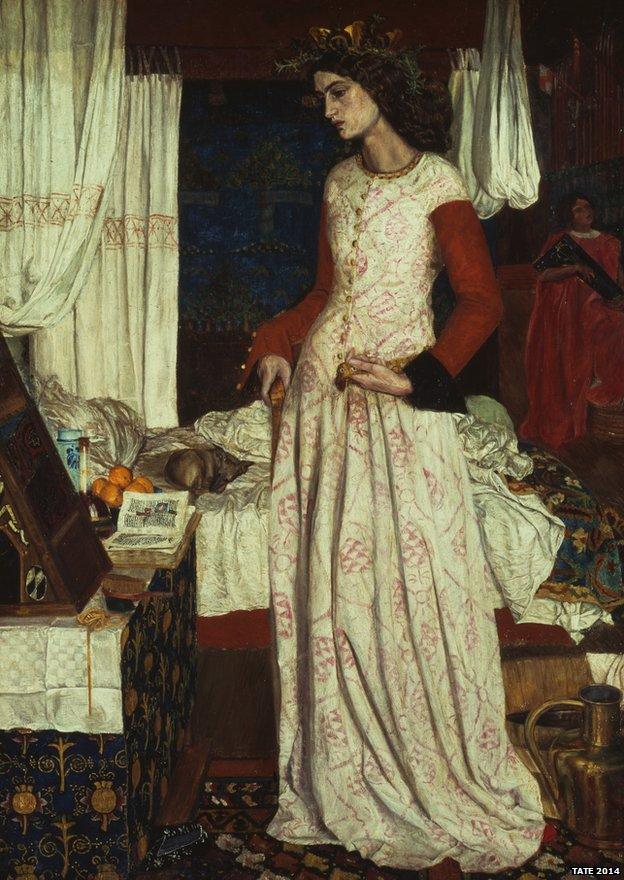
La Belle Iseult (William Morris, 1858) is the only completed easel painting that he produced and is a portrait of Morris' wife Jane Burden in medieval dress.
It's thought that many of the furnishings, such as the Turkish rug, Persian embroidered cover and hangings on the bed, belonged to Morris.
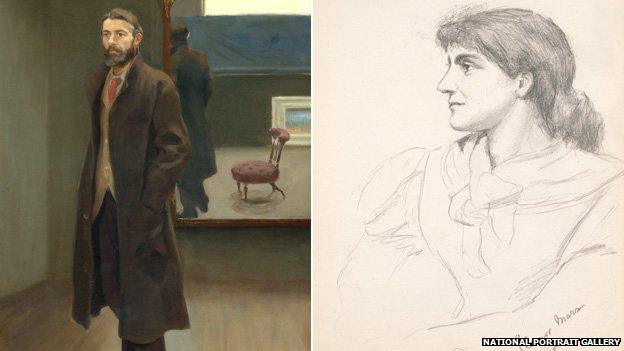
Morris' movement urged people to overturn accepted social and aesthetic values. Author and reformer Edward Carpenter - seen in this 1894 portrait by Roger Fry (left) - was one of the Arts and Crafts idealists who set up their own working communities.
Eleanor Marx (right) was one of Morris' closest female associates.
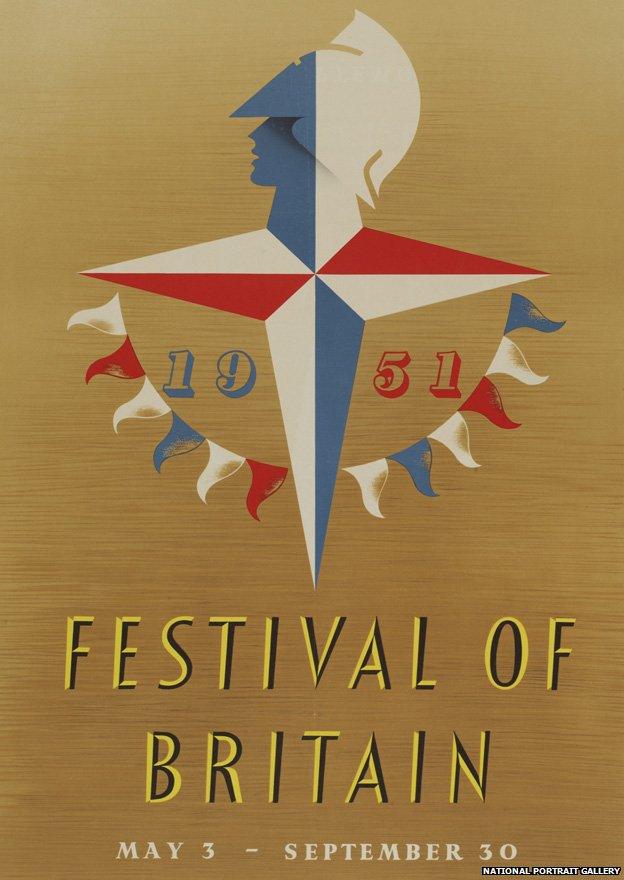
The exhibition extends way beyond Morris' own death and shows how his ideals inspired the post-war Festival of Britain of 1951.
More than eight million people visited the South Bank exhibition that summer in the celebration of community, art, design and architecture.
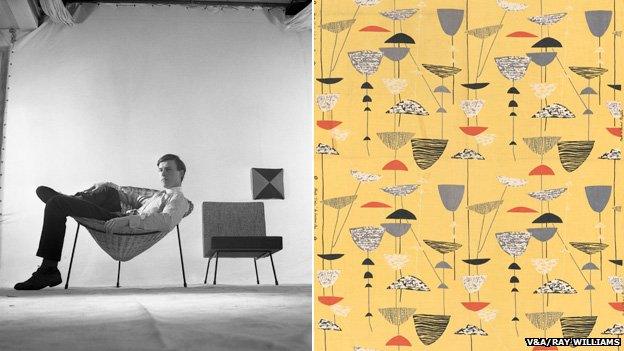
The festival inspired many young designers, such as Terence Conran, to bring the highest design standards to within everyone's reach.
This photograph shows Conran (above left) reclining in his famous cone chair, while the Calyx furnishing fabric (above right) was designed by Lucienne Day in 1951.
Anarchy & Beauty: William Morris and His Legacy, 1860-1960 is at the National Portrait Gallery from 16 October to 11 January 2015.
- Published27 February 2013
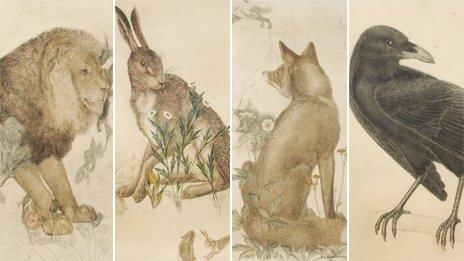
- Published16 August 2012
